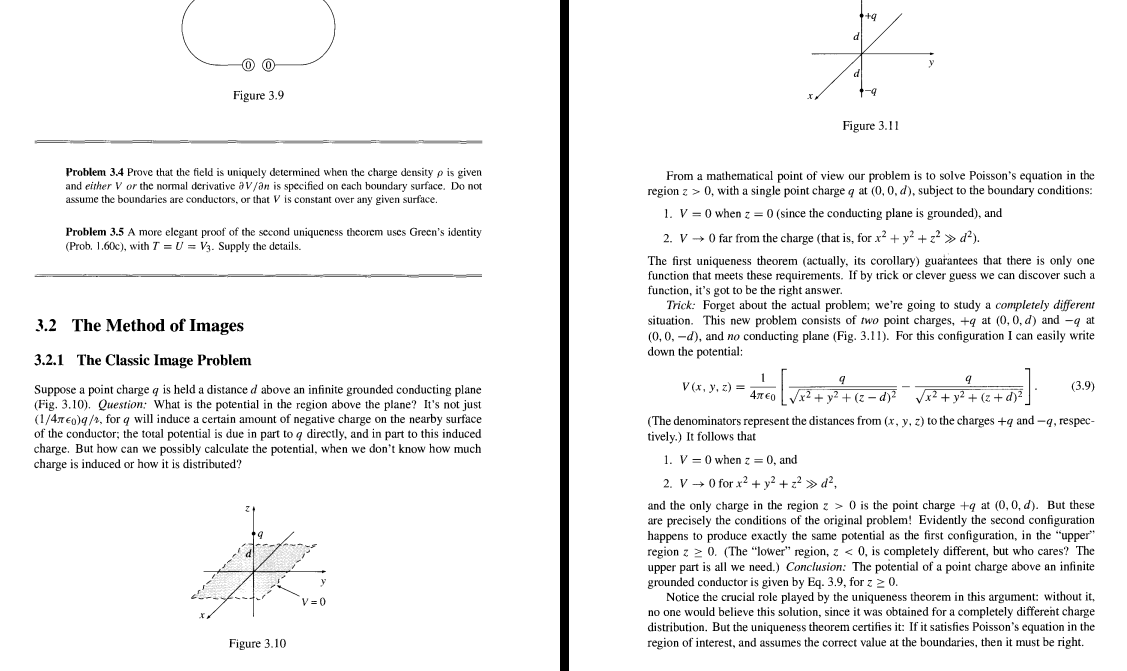I am reading section 3.2.1 of Griffiths 3ed which explains how to calculate potential using first uniqueness theorem.
Griffiths/3.2.1

Griffiths/First Uniqeness theorem (Its corollary actually)

- As I understand we are taking volume $V = R^3$ , $\Phi (\vec{r})=0\ $on the boundary of $V$. But what does it mean by "boundary of $R^3$" ?
- Since $\ \rho_1(\vec{r}) \ne \rho_2(\vec{r})$ which does not satisfy the prequisites of the theorem, we cannot use the theorem. Moreover no other distribution can be used which makes this theorem useless which it is not. So what am I missing here ?
- How aboutDoes not single charge distribution whichalso satisfies the same boundary condititons ? So should not $\Phi$ also be $\frac{1}{4\pi \epsilon_0}\frac{q}{R}$ ?
